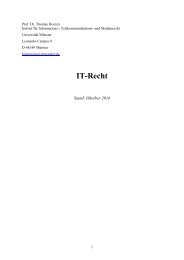3d4yVkKMl
3d4yVkKMl
3d4yVkKMl
You also want an ePaper? Increase the reach of your titles
YUMPU automatically turns print PDFs into web optimized ePapers that Google loves.
- 64 -<br />
(iii) Co-operation with other research institutions<br />
220. Australia points to limited co-operation between JARPA II researchers and other<br />
scientists as evidence for its contention that JARPA II is not a programme for purposes of scientific<br />
research. One of the experts called by Australia, Mr. Gales, stated that JARPA II “operates in<br />
complete isolation” from other Japanese and international research projects concerning the<br />
Antarctic ecosystem.<br />
221. In response to a question put by a Member of the Court, Japan cited co-operation with<br />
other Japanese research institutions. The expert called by Japan, Mr. Walløe, suggested that<br />
co-operation with international research programmes “would be difficult for personal and political<br />
reasons”, given that the use of lethal methods is contentious among scientists. He acknowledged<br />
that co-operation with other Japanese research institutions, such as the National Institute for Polar<br />
Research, could be improved.<br />
222. The Court notes that the evidence invoked by Japan to demonstrate co-operation with<br />
Japanese research institutions relates to JARPA, not JARPA II. It observes that some further<br />
evidence of co-operation between JARPA II and other domestic and international research<br />
institutions could have been expected in light of the programme’s focus on the Antarctic ecosystem<br />
and environmental changes in the region.<br />
(d) Conclusion regarding the application of Article VIII, paragraph 1, to JARPA II<br />
223. In light of the standard of review set forth above (see paragraph 67), and having<br />
considered the evidence with regard to the design and implementation of JARPA II and the<br />
arguments of the Parties, it is now for the Court to conclude whether the killing, taking and treating<br />
of whales under the special permits granted in connection with JARPA II is “for purposes of<br />
scientific research” under Article VIII of the Convention.<br />
224. The Court finds that the use of lethal sampling per se is not unreasonable in relation to<br />
the research objectives of JARPA II. However, as compared to JARPA, the scale of lethal<br />
sampling in JARPA II is far more extensive with regard to Antarctic minke whales, and the<br />
programme includes the lethal sampling of two additional whale species. Japan states that this<br />
expansion is required by the new research objectives of JARPA II, in particular, the objectives<br />
relating to ecosystem research and the construction of a model of multi-species competition. In the<br />
view of the Court, however, the target sample sizes in JARPA II are not reasonable in relation to<br />
achieving the programme’s objectives.<br />
225. First, the broad objectives of JARPA and JARPA II overlap considerably. To the extent<br />
that the objectives are different, the evidence does not reveal how those differences lead to the<br />
considerable increase in the scale of lethal sampling in the JARPA II Research Plan. Secondly, the



